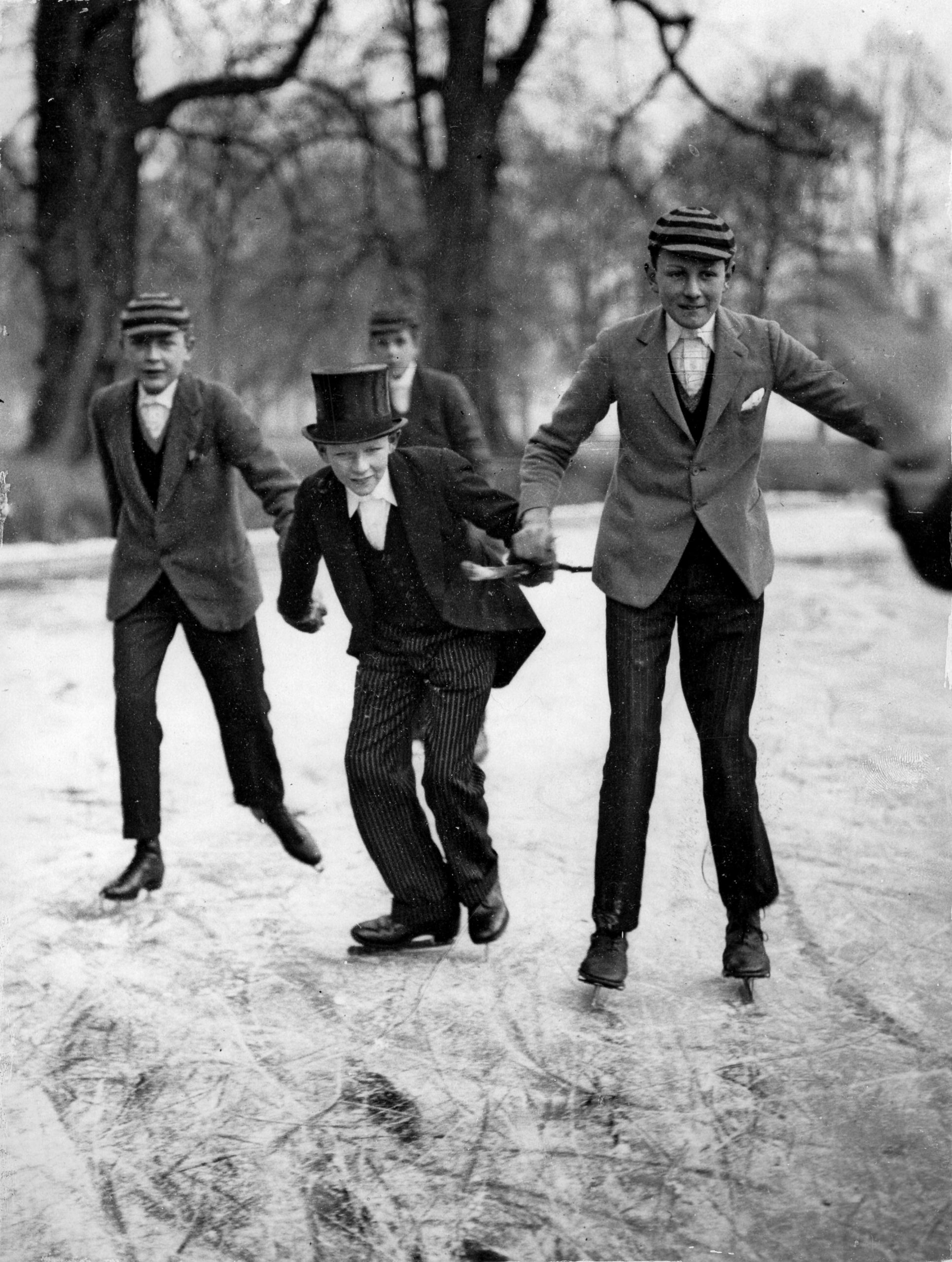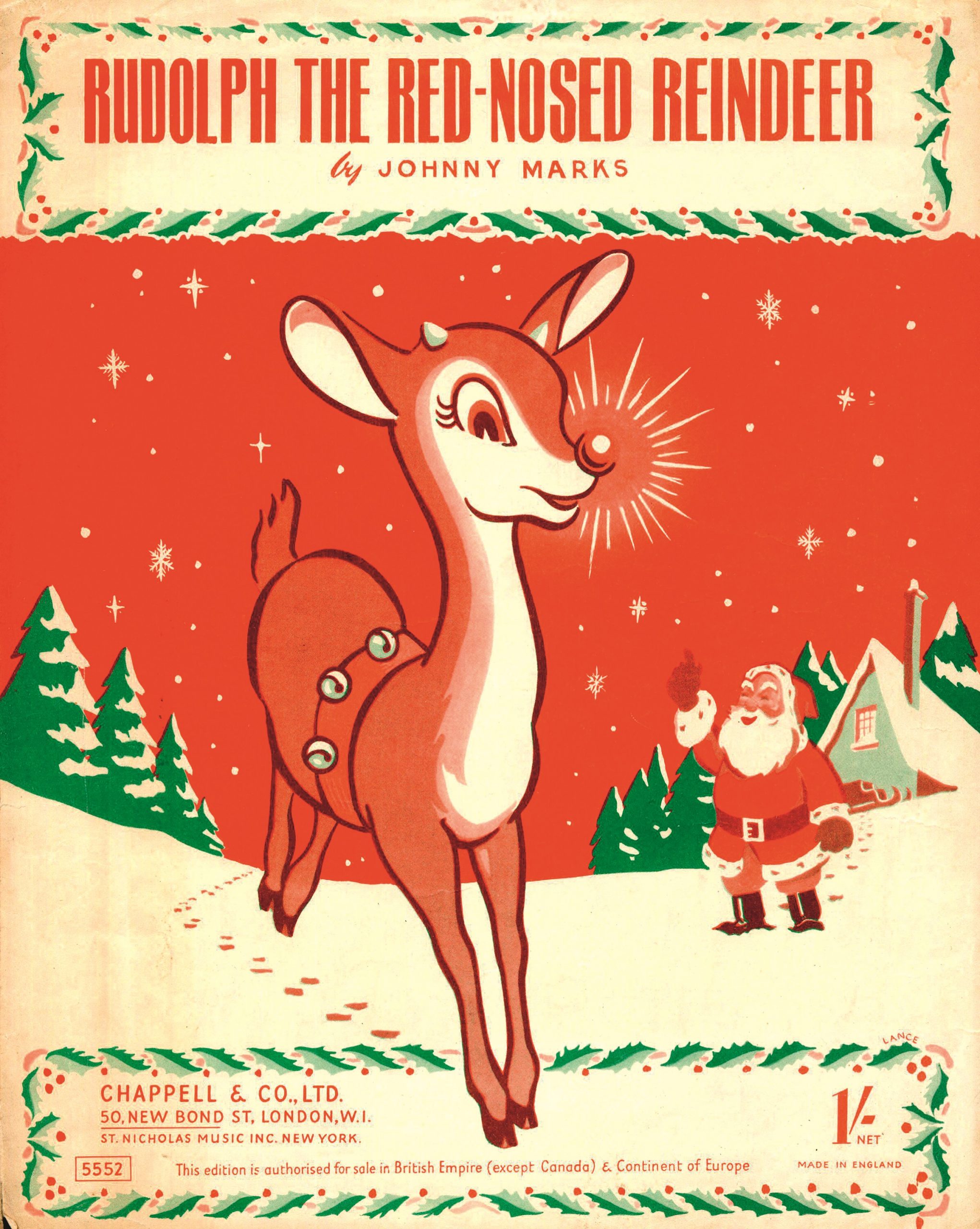The most wonderful time of the year: Country Life's A to Z of Christmas
Lights and turkeys and bells, oh my! Embrace the festive spirit with Amie Elizabeth White’s A to Z of Christmas


It's that time of year once again, and if you're feeling a little more Scrooge than Cratchit, our A to Z of Christmas is sure get you in the festive spirit. Featuring everything from reindeers and kisses, the Nutcracker and ugly jumpers, and why 'Ho ho ho' is really 'Ha ha ha', 'tis the season to wrap up, deck the halls and celebrate all that this vibrant season brings...
A is for ADVENT. Early versions of the Advent calendar saw cupboard doors marked with chalk, God descending to earth on ladders (one rung per day) and Christmas clocks counting down, tick after tock. German publisher Gerhard Lang produced the first commercial Advent calendar in 1908, and in 2007 Country Life magazine’s Editor, Mark Hedges — and our then Art Editor, Phil Crewdson — upped the ante by producing the Advent calendar front cover which has become a much-anticipated Country Life tradition ever since.

B is for BELLS. From the ringing of bobtails to the resounding peal from church bells at Midnight Mass, a sense of magic lingers in every chime and echo. The jingling percussion accompanies many a Christmas song, but their guiding abilities go far beyond the music. In poor weather, bells would be attached to carriages to warn others and were used to guide horses through dark and blustery streets. Father Christmas’s sleigh bells were introduced in the 1700s in sketches of his horse-drawn transport.
C is for CHRIST CHILD, in whom Christmas began. He was born in a stable in Bethlehem, wrapped in cloth and laid in a lowly manger, yet the angels proclaimed him, shepherds adored him and Three Kings or Wise Men from the East followed a star that led to him.
D is for DASHER, DANCER and DONNER, the three Ds of the original octet team of reindeer. In Clement Clarke Moore’s 1823 poem A Visit from St Nicholas, the names given are Dasher, Dancer, Prancer, Vixen, Comet, Cupid, Dunder and Blixem. The latter two are taken from colloquial New York Dutch, meaning ‘thunder’ and ‘lightning’. In about 1837, they were adapted to Donder and Blitzen, influenced by the German blitz for ‘lightning’ — and a much better rhyme with Vixen. By 1906, it was Donner and Blitzen, to give a matched pair of German names.
E is for EGGNOG, the creamy concoction made with eggs, cream, milk, sugar, an excess of alcohol and a spoonful of nutmeg. The drink is thought to have its origins in posset, a beverage of curdle milk with wine or ale, which was popular in medieval Britain. In the 13th century, monks began mixing their posset with eggs and figs to make it even richer and sweeter — and the British piña colada was born.
F is for FATHER CHRISTMAS. His legend began with a pagan tradition: he was a figure that represented the coming of spring, wearing a hooded green cloak and a wreath of mistletoe, ivy or holly. If you treated ‘King Winter’ with kindness, a milder season would be given. Then came St Nicholas, a Bishop from Myra, known for helping the poor by giving generously. His story was brought to Britain after the Norman invasion and converged with the pagan legend, giving us our modern-day man in the red suit.
Exquisite houses, the beauty of Nature, and how to get the most from your life, straight to your inbox.

G is for GIVING. Christmas is a time for gifts, but the day on which the opening begins is far from universal. In the Netherlands, it’s December 5, to celebrate St Nicholas Eve. On December 6, St Nicholas Day, the people of Germany and Belgium untie their ribbons. Elsewhere, as here, it’s December 25, but go over to Spain and you’re in for a treat, as on January 6 more gifts are received, but this time from those Three Kings (as jolly St Nick has already been).
H is for HO HO HO! Although the words are read like a phrase (and even sung by a green giant selling sweetcorn), Ho ho ho is really Ha ha ha, the distinctive laugh of a very merry Father Christmas. In 1823, his image was defined by Moore: He had a broad face and a little round belly That shook when he laugh’d, like a bowl full of jelly.
I is for ICE SKATING. In 1715–16, a bitter winter saw the Thames freeze over and crowds, including royalty, spent hours ‘whirling themselves dizzy’. Harsh winters during the early 19th century made ice skating a fashionable pastime and, by the 1820s, it was a competitive sport for men. Women were not excluded from the fun: figure skating became popular and female hockey teams were organised from the 1890s. The man most responsible for popularising figure skating as a sport was Capt Robert Jones, whose book A Treatise on Skating was published in London in 1772. He gave various instructions on how to achieve the perfect skate, including plain skating, graceful rolling, the spiral line and its most elegant form — ‘the flying mercury’.

J is for JOY TO THE WORLD, a carol written in 1719 by the English minister Isaac Watts. It wasn’t composed to instil Christmas spirit, but to revolutionise the monotonous music that accompanied every church service. To Watts, there was but ‘a dull indifference’, a ‘negligent and thoughtless air that sits upon the faces of a whole assembly, whilst the psalm is upon their lips’. To solve his displeasure, he tasked himself to write joyous lyrics that exalted Christ, so Heaven and Nature sings.
K is for KISSES under the mistletoe, a stolen moment between two lovers or an excuse to catch the one you want. Despite its associations with innocence, peace and love, the decorative plant is actually a parasite, attaching itself to the host tree of choice, then syphoning off water and nutrients for its own good.
L is for LIGHTS. In 1882, Edward H. Johnson, a friend of Thomas Edison, put together the very first string of electric lights meant for a Christmas tree. In 1920, American shop owner Frederick Nash decided that bedecking the trees along Santa Rosa Avenue in Altadena, California, US, with hundreds of lights would make for a jolly Christmas display (not to mention great advertising) and the tradition of light displays began. There are now about 100 Christmas light trails around the UK, including that at the Royal Botanic Gardens, Kew in London, said to be the original.
M is for MINCE PIES; not salted caramel, pear and peanut or any of the other variations we are faced with each year, but proper ones, made from buttery shortcrust pastry, fit to burst with sweet and sticky mincemeat. In years past, the treat was more savoury than sweet, using lamb to represent shepherds and spice for the kings from the East. The Tudors shaped their pies like a manger and topped them with a baby Jesus pastry lid.
N is for The NUTCRACKER by Tchaikovsky. First performed by the Imperial Russian Ballet in December 1892, it has since become the world’s best-known ballet and a true Christmas classic, but success was not a given. The first performance saw critics describe the choreography as ‘disorderly’, the libretto as ‘lopsided’ and the composer himself declared it ‘very boring’.

O is for O TANNENBAUM, or O Christmas Tree to you and me. The modern lyrics were written by organist and composer Ernst Anschütz, referring not to Christmas, but to the fir’s evergreen quality as a symbol of constancy and faithfulness. It was only as the Christmas tree was popularised in the 19th century by Prince Albert, who imported several spruce firs from Coberg in Germany to serve as trees for decorating in 1840, that the song became associated with the festive period.
P is for Christmas PUDDING, a festive staple dating back to medieval England. It is traditionally made ‘on the 25th Sunday after Trinity, using 13 ingredients to represent Christ and the 12 apostles, and every family member should stir it in turn from east to west, to honour the Magi and their journey in that direction’. The result is plump, round and oozing with alcohol, a flaming centrepiece to the festive spread.
Q is for QUEEN’S SPEECH, a Christmas Day tradition in which we heard from our last monarch every year from 1952 until 2021 (excluding 1969, a year when she felt that the monarchy had received enough publicity). Begun by George V in 1932, when he delivered the words written by Rudyard Kipling live from Sandringham in Norfolk, the Royal Christmas Broadcast was a poignant way for his son, George VI, to deliver a message of reassurance and unity to his people after the outbreak of the Second World War in 1939. It was in 1957 that Elizabeth II first broadcast via television rather than radio and this year, for the second time, it is Charles III’s words that we will gather around to hear.
R is for RUDOLPH. The red-nosed reindeer was teased and tormented, but it was his difference that made him such an asset. The poem was written in 1939 and has since appeared in song (1949), on stage and on television, including in an episode of Doctor Who in which Father Christmas rode on his back, parked him with a key and switched off his nose like a headlight.

S is for SCROOGE, not only the cold-hearted miser of Dickens’s Christmas novel, but an adjective, added to the Oxford English Dictionary in 1982, used to describe anyone who doesn’t abide by the spirit of Christmas with a smile on their face.
T is for TURKEY, another modern Christmas tradition thought to come from Queen Victoria and Prince Albert, who put the large bird centre stage on their Christmas table in 1851. Yet despite their royal status, their feast seems far from ostentatious. The Georgians that came before them, known well for their lavishness, also included turkey on their Christmas menu. A recipe for their turducken, as it was known, taken from the influential cookbook The Art of Cookery Made Plain and Easy (1747), involved putting a pigeon in a partridge, the partridge in a fowl, the fowl in a goose and the goose in the turkey, which was then surrounded by pie crust and meats from rabbit, woodcock, moor fowl and any ‘wild-fowl you can get’.
U is for UGLY JUMPERS, because no matter what the dress code, there will always be one wearing the most garish festive knit they could find. Think Colin Firth’s reindeer-adorned atrocity in Bridget Jones’s Diary.
https://youtu.be/zRnuZlyWXI8?si=W5CCoH705bWuriIy&t=16
V is for VISITORS: unannounced, unexpected and with no sense of urgency. For Christmas time means the door is always open, the fire is always lit and a drink is always waiting, ready to be poured.
W is for the WHITE CHRISTMAS idyll we all dream of: snow-covered fields, sledging down the lane and warming up by the fire after building a snowman outside. That is, until we need to get things done and the blanket of white becomes an obstacle course of treacherous, grey sludge.
X is for XYLOPHONE and all of the other noisy toys that no parent would ever put on their Christmas list. There are squeaking dog toys here, drumming nephews there and ‘Alexa! Change the song!’ being called from, well, anywhere.
Y is for YULE LOGS, burned by European pagans as part of their winter solstice rituals, warding off the darkness through the longest night of the year. Centuries later, Christianity adopted the tradition to symbolise Jesus’s triumph over sin. Today, the yule log is the sin, but another slice of cake can’t hurt.
Z is for those sacred ZZZZZZZs… when all is said, sung, given, gulped, enjoyed and out of sight… happy Christmas to all and to all a goodnight.

When did Stir-up Sunday first begin?
On the last weekend before Advent, families gather to make Christmas pudding on the day we know as Stir-up Sunday.

Credit: Fred van Deelen for Country Life
How to fold a napkin rose at Christmas: A step-by-step guide
A beautifully-folded napkin is the ideal way to finish off your festive table setting. Here's how to fold a rose

How to build the perfect snowman
If we get lucky and the weather delivers a big fall of snow, Katy Birchall has the best recipe for
Amie Elizabeth White is Country Life's Acting Luxury Editor. She studied history at the University of Edinburgh and previously worked in fashion styling. She regularly writes for Country Life's London Life supplement and has written for Luxury London, covering everything from Chanel suits and skincare, to the best pies in the city. She has a big heart, but would sell her soul for a good pair of shoes.
